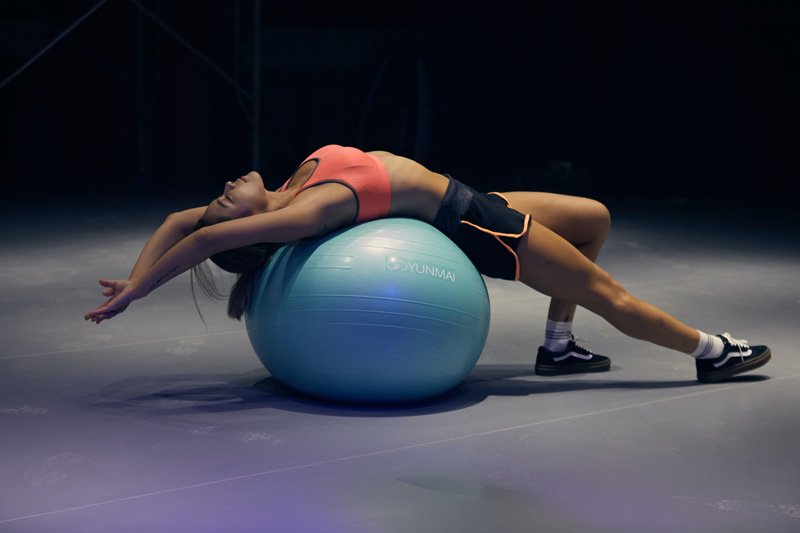
Have you ever noticed a ridge or coning of your belly when you sit up?
Lost all the “baby weight” but still feel like you have a pooch?
Does your core just not feel strong and stable?
While some women are quick to lose the pooch by a couple weeks to months postpartum, most struggle with it. The problem, though, is that the postpartum pooch isn’t a post-pregnancy scar, it’s actually a medical condition known as Diastasis Recti, and, if left untreated, it can have a lot of negative consequences on your overall health.
What are Diastasis recti A.K.A. Mommy pouch?
Diastasis Recti is a repercussion of your pregnancy as the muscles in your abdomen separates & stretches in your body along with the pregnancy hormone called relaxin, which does the job of softening your body’s connective tissue to accommodate your growing baby.
This can cause the tissue in your abs, linea alba, to stretch and sometimes even tear. For others, though, the gap remains, and that means that there is little connective tissue holding everything in your abdominal area together.
Gravity kicks in and your organs and overlying tissue seep through the gap and bulge out, creating the pooch.
How to know if you have Diastasis recti?
While it’s common for the 2 muscles that run down the middle of your stomach to separate during pregnancy, the amount of separation can vary. This gap naturally opens up during pregnancy in order to accommodate your growing baby, and for some women, it closes up by the time the baby is 8 weeks old.
After you’ve had your baby, you can check the size of the separation with this simple technique:
- Lie on your back with your feet flat on the floor and your legs bent.
- Raise your shoulders off the floor slightly and look down at your tummy.
- Using the tips of your fingers, feel between the edges of the muscles, above and below your belly button. See how many fingers you can fit into the gap between your muscles.
- By doing this regularly you can check the gap to see if it’s gradually getting smaller.
Are you at risk of getting Diastasis Recti?
If you are looking to prevent diastasis, it is good to know what increases your risk to the condition.
Reasons that increase your likelihood of abs separation during/after pregnancy

▪ Having a damaged Core before your pregnancy: If you do incorrect Abs workout, if you have allergies such as coughing and sneezing or suffering from chronic constipation.
▪ Being obese before pregnancy
▪ Having more than one child especially in a short span of time
▪ Getting pregnant after 35
▪ Being too small made (underweight)
▪ Having multiples
▪ Having a poor posture
▪ Genetic: if you have family members with the condition, you already know that you’re likely to get it, so you can really tackle prevention and reduce the severity of the gap.
How to recover faster from the diastasis during pregnancy and prevent it from staying after your delivery?
Follow the below exercises before, during and after your pregnancy to get rid of the mommy pouch.
1. Strengthen your abs

Before pregnancy
Having poor abs tone increases your chances of having the pouch. Hence doing crossover crunches and bicycle crunches is highly recommended because once you do have Diastasis Recti you should probably refrain from ever doing them again.
During pregnancy
Once you are pregnant, you should AVOID any exercises that put excess tension on the abdominal muscles, especially after the 20-week mark when the gap begins developing. Tension causes your muscles to contract and get smaller, and the force of the tension also pushes out the underlying tissue at the gap, resulting in the pooch or making it worse. It isn’t limited to exercises like crunches, sit-ups, front planks, push-ups, press-ups, and double leg raise.
The only exception is if you have already been working on correctly strengthening your core before pregnancy, then continuing to work out your core is considered safe in the first trimester of pregnancy.
● Once you are pregnant, the best core strengthening exercise you can possibly do is called the Vacuum Crunch.
● While the stomach vacuum works well before your belly starts to get bigger, between 18-20 weeks, once you hit that mark you should switch over to a variation of it referred to as belly breathing (or you could just do belly breathing throughout your pregnancy and the stomach vacuum after).

The belly breathing exercise helps to strengthen your core and protect against diastasis recti. This is how it works:
1. Pick your position. You could either sit with your legs crossed, on a stability ball, standing up or against a wall.
2. Relax your pelvic floor (you ‘tense’ your pelvic floor when you tuck in your butt) while keeping your shoulders back and still.
3. Slowly inhale, expanding your ribs.
4. While you exhale through your mouth, draw in your abdomen towards your spine and lift up/contract your pelvic floor.
5. Hold this position as long as you can and repeat as often as you want.
Here are a few ab strengthening exercises you could try during your pregnancy
- Side Plank
- Dumbbell Side Bends
- Standing Side Crunches
- Cat Cows
- Standing Rotational Exercises
- Head Lifts
All your workouts should only be attempted carefully, with proper knowledge, and upon doctor approval. Stay safe, stay fit and have a mindful pregnancy!

